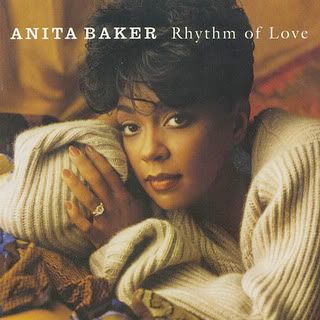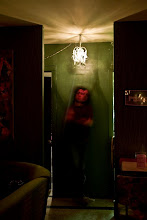Soft Rock

from Smooth R&B:

Soft Rock was developed in the mid 1970's by LA session musicians who played on both rock and r&b records. The sound was a combination of r&b rhythm in mostly mid tempos, sophisticated arrangements (that sometimes utilized jazz harmony), emotionally restrained vocals, and pristine production highlighted by low-tuned and naturally mixed drums, guitars with chorus and/or slight phaser, electric piano and a tasteful wash of reverb on everything (except the drums).
Soft rock artists/musicians often appeared on each other's records (in particular backup/lead singer Michael McDonald, guitarist Larry Carlton and various members of what would become the band Toto, especially drummer Jeff Porcaro), which enabled a consistency in style and sound to develop. The overall feeling of Soft Rock was detached cool, and water images easily come to mind when listening to it. Love was either something quietly pined for or softly fought for; moments of emotional intensity were rare and generally saved for choruses and guitar solos. Notable Soft Rock artists/groups include Steely Dan, Michael McDonald, Kenny Loggins (pre-Footloose), Ambrosia, Player and Christopher Cross.
Choice Cuts
(you may have to click "skip this ad" at the top of the page):
Player - "Baby Come Back"
Kenny Loggins - "Who's Right, Who's Wrong"
Michael McDonald - "I Keep Forgetting"
Ambrosia - "Biggest Part of Me"
Smooth R&B had it's initial seeds planted in 1970s soul music. A few individual
artists such as Marvin Gaye, Minnie Rippington, and Barry White chose to turn down the gospel-influenced emotional catharsis of soul music in favor of something slower, quieter and more sexy. This laid the groundwork for what would become known in the 1980's as Smooth R&B. Smooth R&B was defined by slow to mid tempos, heavy reverb, programmed drums, buttery synths and acoustic piano, deep bass and stylized, emotive vocals. As opposed to Soft Rock, which was created by a collaboration between singers and musicians, Smooth R&B was created mostly by singers collaborating with a producer (or group of producers). But the initial stars of the genre (most notably Luther Vandross) split their sexy Smooth R&B material with more conventional pop ballads and uptempo numbers.
However, by the end of the 1980's and into the 1990's, as the envelope of sexuality was being pushed more explicitly in pop music, Smooth R&B became fully established as it's own genre. Artists and vocal groups could more easily define themselves by the aesthetics of the sexual and sensual without having to balance it with tamer pop material. While there were plenty of male artists doing solid work (Babyface, Blackstreet, Al B Sure), it was two female artists who arguably contributed the most to the genre at that time: Anita Baker and Sade.
Anita Baker's jazz-inflected phrasing and spare instrumentation became a benchmark for style and production. She also separated herself from other Smooth R&B artists by focusing mostly on acoustic instruments. Her musical influence can still be heard in the Smooth R&B spinoff genre of Smooth Jazz, with instrumentalists like Boney James, Kenny G and Dave Koz assuming the role of the singer.
Then there was Sade.

Yes, she indeed was (and still is) very beautiful. But beyond her beauty lay an alluring, airy swoon hinting at an emotional depth floating just below the surface. This, combined with a seamless blend of subtle beats, lush synths and delayed guitars made her music the most artistically ambitious of the genre. Her music also became the cultural crossover soundtrack to a generation of teens getting it on between the years of 1985 and 1992. I particularly remember the drummer in my suburban high school band saying something to the effect of "there's nothing betta than 'Love Deluxe' when her parents are outta town, It's so frickin hot."
As mentioned earlier, credit should also be given to the producers in creating Smooth R&B. The music would not have been possible without the fine work of people like Quincy Jones, Jimmy Jam and Terry Lewis, Babyface and Marcus Miller. A whole other post could be written about their work.
Choice Cuts:
(you may have to click "skip this ad" at the top of the page)
Luther Vandross - "If Only for One Night"
Al B. Sure - "Nite and Day"
Anita Baker - "Giving You the Best that I Got"
Sade - "Cherish the Day"
In short, the differences between these two genres can be summarized by the basic terms of mating ritual: Soft Rock is the candlelit courtship and Smooth R&B is the red wine seduction.

No comments:
Post a Comment